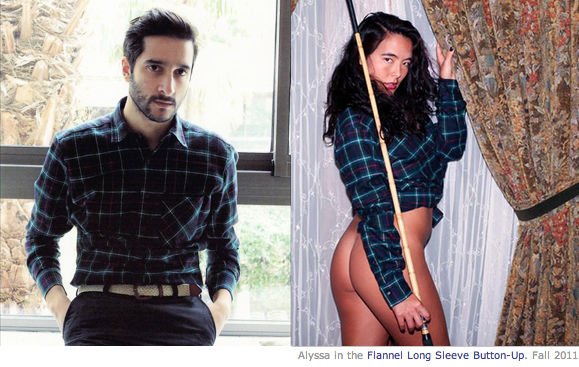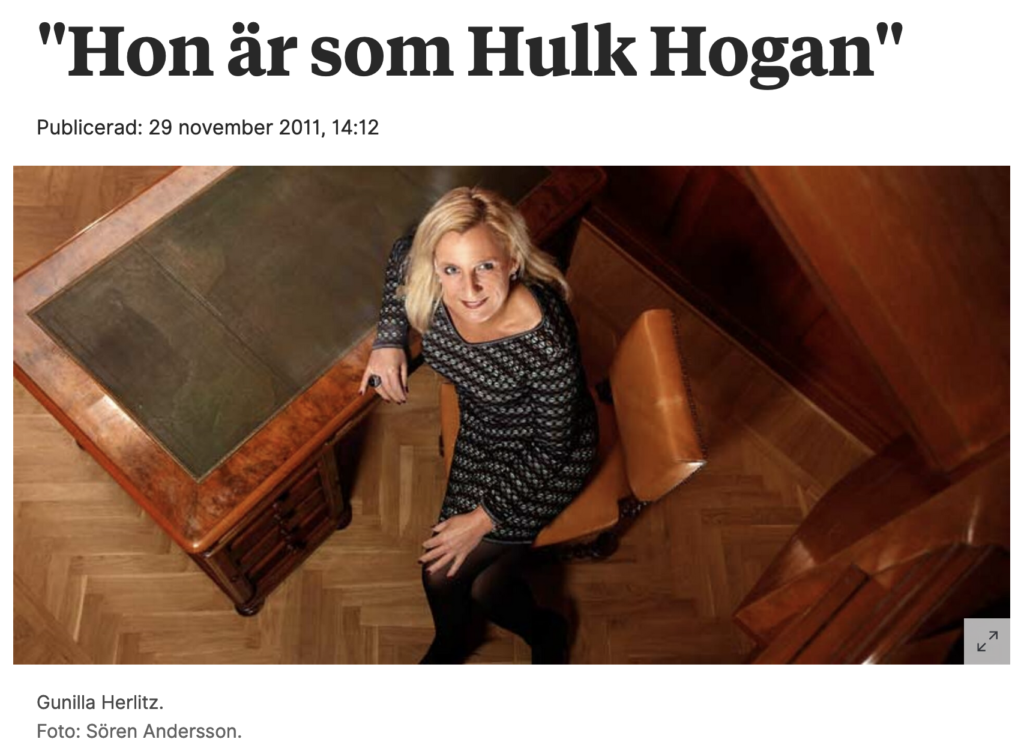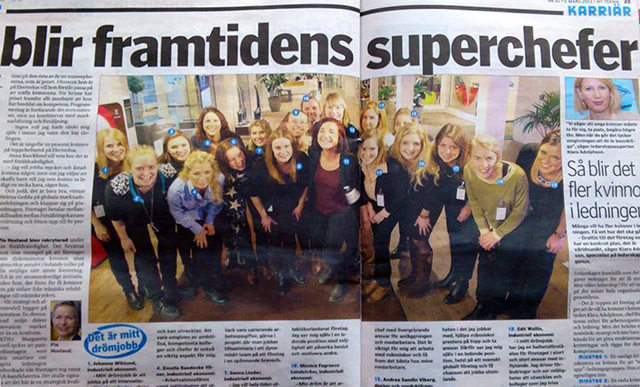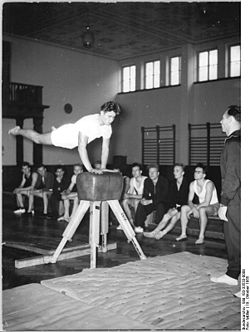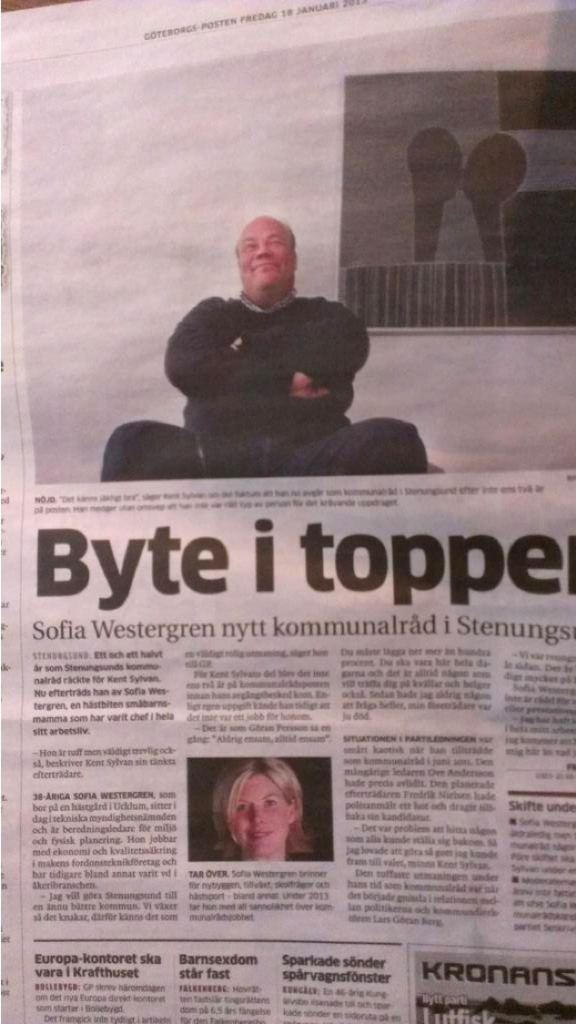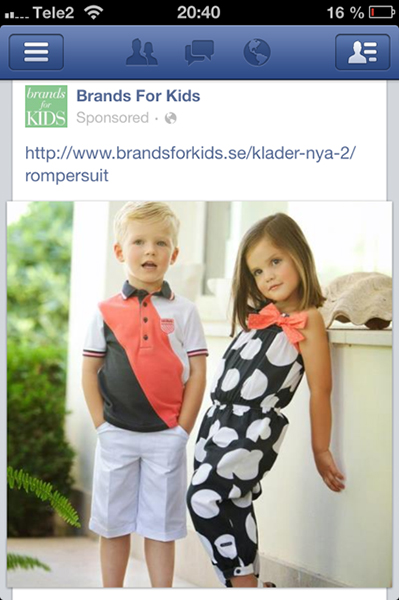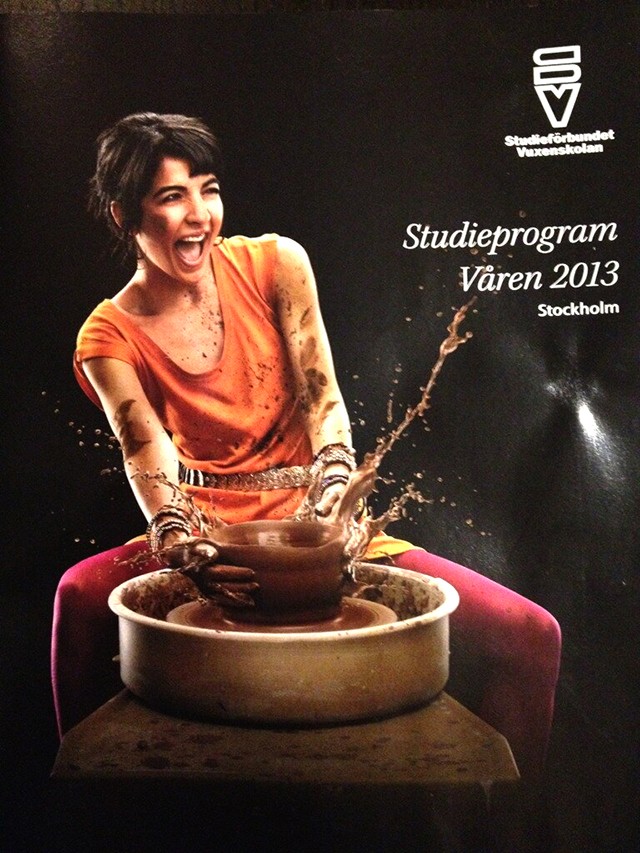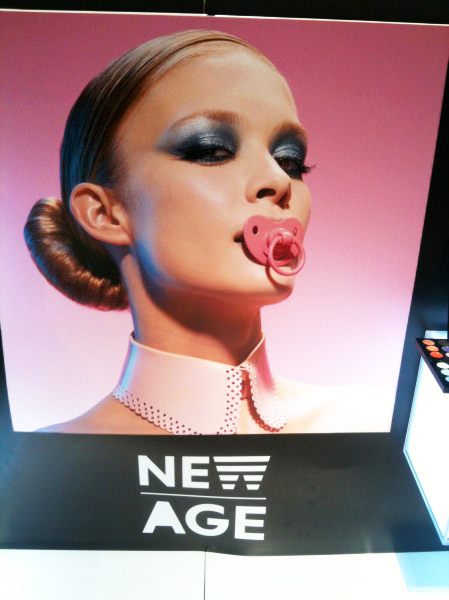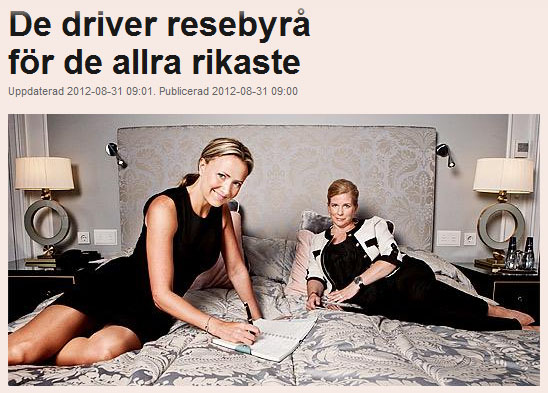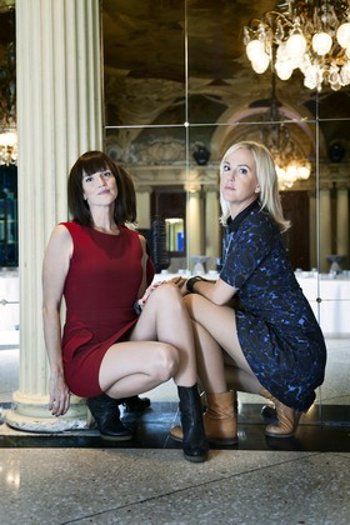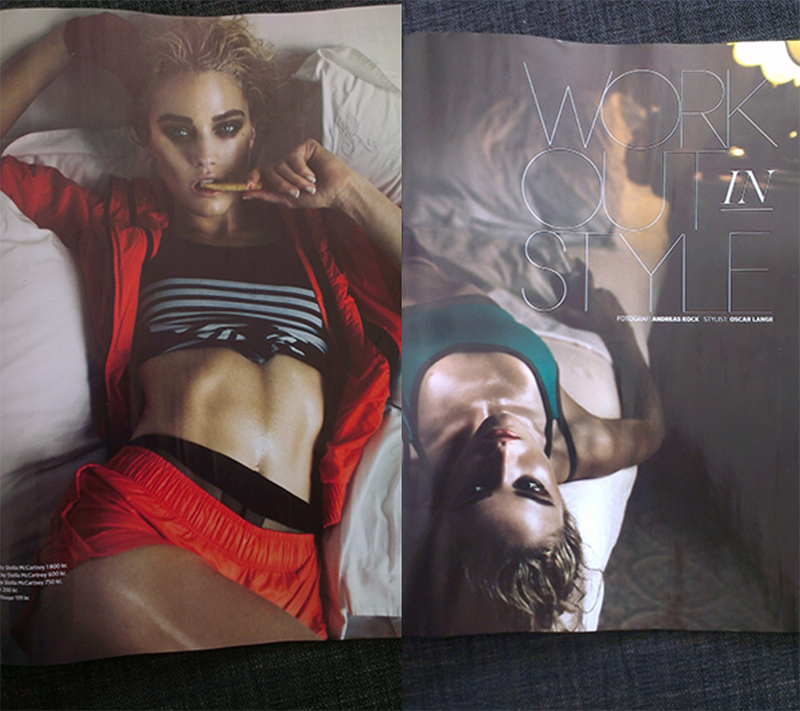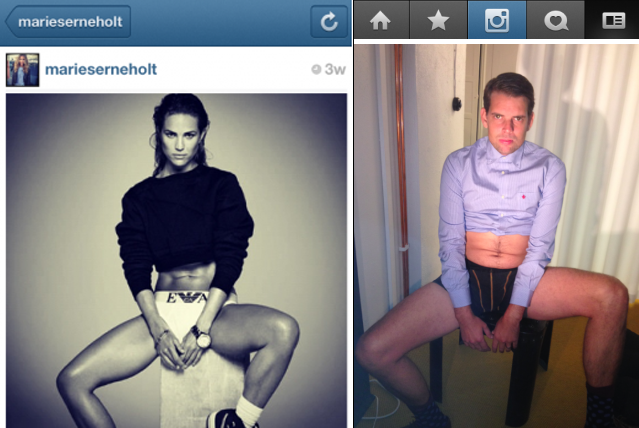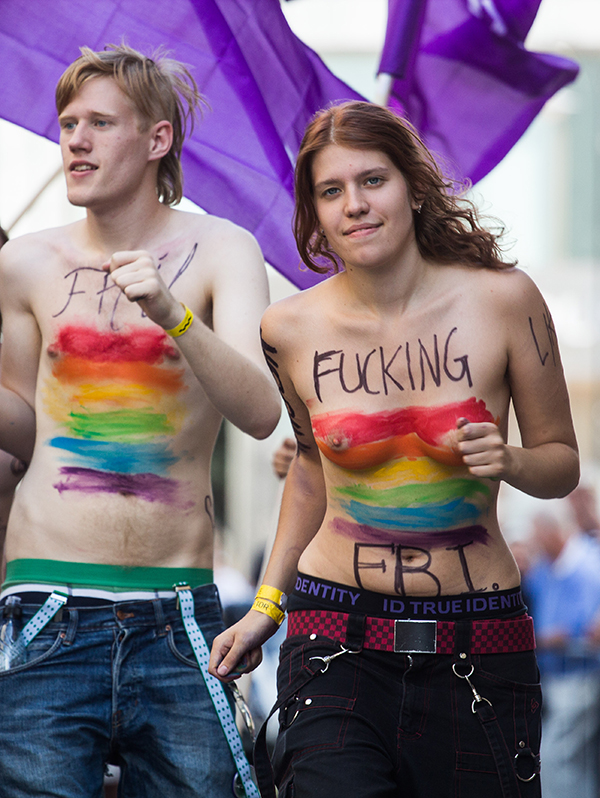Who becomes Sexist of the Year 2013?
In 2013, sexism was news.
We saw the pattern repeated over and over again: A clothing company, a white well-off male restaurant keeper or a Danish monster chooses to market themselves with the help of coarse sexism.
The images cause a blast in social media. Old media describes the shit storm. Then, in several interviews, the company, the pub or the monster may explain to us that sexism is Art, and that we who are offended by it are unsophisticated, hypersensitive and uncool censors.
We will dissect this phenomenon closer. I will take you on a tour through the bloodstream of sexism and together we will study, punctuate and review six works of “art”, in order to crown …
Sexist of the Year 2013
Five of the candidates have already gone through the cycle I described above. The sixth has all the potential in the world to do so. (It is the worst of all over a thousand images I received in 2013 – it is a mystery how not more people have seen it and panic, where it is fully visible for anyone to see and has done so at least since the beginning of June.)
The winner will receive a small prize I did during my Christmas holidays.
I will personally hand out the Golden Boob Mug.
But only if I have got over 1000 votes! (Otherwise I’ll sell it in a street corner.)
You can vote until 8pm on Friday. And you do this by ticking your favorite sexist in the voting form at the bottom of the post. Please also contribute your motivation in the comment section.
Which picture do you think carries the most harmful gender baggage? Which image gave you the most stomach ache because of the most connecting points with real discrimination?
And the nominees are…
Per Lydmar
for the woman on Strandvägen 1
Without calories, you won’t have the energy to stand on the barricades.
That’s the spirit of Naomi Wolf’s feminist 90s bestseller The Beauty Myth: How Images of Beauty Are Used Against Women. At a time when women seem to have more power, career paths and human rights than ever before, the last path of patriarchy to social control is through their stomachs. Create a beauty ideal that causes her to reduce herself, her psyche, her existence. Have her direct all the will to change to her own healthy body instead of our sick world.
From that perspective, the background image that the pub owner Per Lydmar chose for the website for his new luxury pub is patriarchy-smart. A woman with a veil in her face. A breast that refuses to stay within the dress. Ribs pressing against the skin and rocks pressing against her buttocks. And no food as far as the eye can see.
As a woman you should not be hungry. Neither on sex, food, or knowledge, nor in other ways to live and expand in the world. You need to be there to feed an appetite – not have your own.
The ideal woman is neither sitting at the dinner table nor standing on the barricades. She sits on the rocks in the archipelago and sips the saltwater-wind filtered through a veil (and vomits it in the foam of the waves when you look away).
Per Lydmar’s defense:
“I have been interested in art and exhibited it in public settings since the mid-1990s. Much has been far worse pictures than this.
… If anyone thinks I have this picture to sell more potatoes, I don’t think you know me that well. I’ve had Ku Klux Klan pictures in my old lobby.”
Really?
You don’t think there would be any reactions at all if your website looked like this?
After first saying “I have never censored our art and will not do it now either” Lydmar then did exactly that and replaced the woman on Strandvägen 1 with a photo of his innocent bull terrier Billy:
Well. But what went wrong then? Why didn’t people think this image would represent art?
Gender Coach Tips: Do not use a model with the body type that appears in 95 percent of all commercial images but only 5 percent of real women have. It gets people to associate with commodification of women’s bodies and the vampiric-bulimic fashion industry rather than art.
In the article Fashion Models as Ideal Embodiments of Normative Identity , sociologist Patrícia Soley-Beltran describes how the Model, through constant repetition in the visual world, was incorporated as a symbol filled with messages (among other things about gender, ethnicity, sexuality, glamor and consumption), rather than actually meaning “a human being”.
The model is the norm in the pictures that surround us. And the effect of embodying a norm is that one becomes invisible. We rarely think about how bizarrely photo models really pose until they end up in a context where they stand out. (Like on a website where you expect to see a picture of a sweet, butter-drooling potato, but are met with a picture of Death by the sea.)
A good example of this is the Spanish artist Yolanda Dominguez’s project Poses

Photos: Yolanda Dominguez. Google Yolanda Dominguez art project to see it in its proper moving format.
A man had probably looked very weird on the rocks in the Strandvägen 1 picture. But my point is that it would be enough to put a woman with any kind of body other than the standard white, lean, upper-class, feminine, 180 cm tall and 18 years young body with no visible disabilities to make the image look completely absurd.
And then it probably felt more like art than it did now.
Could perhaps the Golden Boob Mug could be a nice new background image for Per Lydmar’s website?
TT News Agency
for The Breast Wall
When I first heard that there would be a new “breast wall” at Sweden’s largest news agency TT, I imagined something like this:
The actual breast wall, however, turned out not to be quite as easily condemned as the one above had been.
A collage depicting six of pop star Nicki Minaj’s faces and 15 pairs of her breasts.
The breast wall split our social media swarm brain in half. Some just perceived Nicki Minaj in a bikini bra or were even provoked by the mere thought that Nicki Minaj would even be reduced to a sex object. Others looked hypnotized at the wall, studied details such as Nicki Minaj’s head sometimes disappearing into the pattern but never the breasts, and could not discern a human subject in the photo.
TT’s CEO Jonas Eriksson chose this attitude:
“Pictures affect us in different ways. We also have pictures of a house that has been torn apart by bombs, but it is part of our everyday life. We can’t remove a picture just because one or two employees get upset and think it’s horrible.”
Houses bombed to shreds. Ku Klux Klan…. Interesting how the men who defend these images nonetheless associate them with other human rights violations.
But okay. What does the Gender Photographer think then?
Well, the first thing I noticed when I saw the picture was not the breasts.
Nervous breakdown, would maybe be the title I’d give this image. Or Nicki Minaj assaulted by a drunk giant spider depicted from the spider’s view.
I can agree with those who found Minaj looking pretty shattered. Both by the pattern and psychologically. The hand on the throat as if she was suffocating. The terrified look. A classic, glamorous “scared but horny”–pose, but unusually little horny in it. It’s an unusual Nicki Minaj in the picture over all, I think. The artist that TT specially commissioned this collage could easily have found many pictures where her personality shines through much more strongly.
I’m not saying this picture would do better as a photo wallpaper in a workplace, but surely it shows more who she is as a person even when she makes the stricken porn-influenced “sex doll”-pose?
Then I must also agree with those who have criticized this wall that yes, getting your body fragmented, cropped and chopped up into decoupled sexualized body parts instead of being depicted as an intact, composed human is something that more often affects women than men in the pictures.
In the article Significant Bits and Pieces:Learning from Fashion Magazines about Violence against Women (pdf), law professor Cheryl B. Preston describes this as one of several examples of how women are subjected to “photographic violence” by getting their humanity trivialized in the picture:
“A surprising number of women in ads are cropped somewhere across the face. … Countless ads omit women’s eyes and other signals about their person.
The breasts are often in focus, but even when sexual parts are not emphasized, interchangeable legs, partial backs and other body parts are scattered among several frames in a way that the woman is denied bodily integrity.”
Cheryl B. Preston
Two examples of it, and of how unnoticed it passes.
From the website to a small shower manufacturer in Skogås, Stockholm:
Where are the men? (And the showers?)
So … I can see several reasons why someone would feel bad about this picture, in addition to Nicki Minaj’s breasts being over-represented in relation to her face. But what does it matter what I think? Several of the employees at TT strongly disliked the wallpaper. And the managers at TT chose not to listen. It cost them a reporter.
Angelica Karlsson is working now for Aftonbladet instead.
A Golden Boob Mug to the managers of TT, whom can take turns having it on their desks, as a reminder that it can sometimes be good to swallow your pride and paint over a damn wallpaper?
Anders Vendel
for Wendel’s dining room
Four women and a man in a restaurant kitchen. The women wear chef jackets and cap hats, string panties, hip holders and nylon stockings. One of them files the nails, another stumbles and drops a bowl of fruits and almost their breasts. Monitoring them is a male chef holding a leek like a whip.
Message: Women are not only unintelligent life-forms, they also spread e-coli bacteria in our restaurant kitchens.
When criticized, TV chef Anders Vendel commented the photo, which was used to announce that his restaurant will open again in August, like this:
“You could say it’s modern art. A little unexpected, as the food may be. So I think there’s a theme here.”
To say the least.
What’s the thing with white rich male chefs and sexism? I mean, it is obvious that Anders Vendel saw the media revolt around Strandvägen 1 and decided that he also wanted to put his restaurant on the sexist restaurant map. But can there be any particular reason why chefs are serving us the crudest sexism?
I think it may be because the gender equality in the restaurant and restaurant industry is to hell.
If you count the total number of chefs in the country (all kinds of positions: chef, kitchen chief, catering chef), 53 percent are women and 47 percent are men. But at the elite level it is almost next to just men behind the aprons. One woman ever has won the Chef of the Year competition (Kristina Petterson, 1988). Among the top-ranked restaurants in White Guide – which rank Sweden’s finest restaurants – three have female head chefs.
And how many female chefs do you guess that the Swedish chefs national team 2013 consisted of?
None.
And what tends to happen in enclosed rooms where there are almost only men and dickheadedness atmosphere can ferment and ferment?
If you read the article above from Everything About Stockholm, you get a clue that Anders Vendel may not be a lone ass, but that it his “art” could rather represent a crude sexist culture in kitchens.
“It’s sexist – oh, yes. I have thousands of examples of this very sexist jargon. I have heard it is discussed everything from sperm consistency to those in the service who have the nicest breasts. It’s something you are forced to hear every day. If you complain, you’re a prude.”
Female chef, 28 years
“Even if you have a collegial relationship, you do not want to be in trouble at work. Or to be patted on the ass and treated with the ‘little girl’-attitude. And in the event of a conflict, you are at a disadvantage because it has been cemented that you are at a disadvantage. ”
Female chef, 36 years
Territory-markingPISS from men who hasn’t had their dominance challenged before? (Note that the women in Vendel’s ad actually are supposed to represent chefs.)
But he doesn’t just piss on his female chef colleagues. The urine also sprays down on other women in the restaurant industry, who have lower and less stable positions.
SEVEN out of ten – 66 percent – of 300 women in Stockholm and Gothenburg who work or have worked in the restaurant industry, answered “yes” to the question in the SvD’s questionnaire if someone had behaved uncomfortably in a sexual way against them, if they’d experienced unwelcome touch or abuse during working hours.
“As a waitress, you are a public property that everyone wants to have a piece of. … Flirting is perfectly normal, it’s everyday. “Innocent” touch is also perfectly normal. “
Jeanette Superti , 33
“As the headwaiter passed me, he grabbed my hips and pressed my butt towards his genitals. He could also drop comments like ‘How good are you sucking’ when I vacuumed the restaurant.”
Katarina Anderson, 20
“Flirting unashamedly, being close and having a vulgar jargon has always existed in the restaurant world. … the chefs who can’t stand it usually move on to another industry. “
Waitress, 27
In how many industries have the majority of all women been involved in sexual harassment?
Understand that Anders Vendel is an employer.
Could their be any more tasteless sexists?
Hey, we’re only half-way through the gallery.
Thomas Blachman
for Blachman
Denmark, 2013:
Sorry. Wrong picture.
This certainly represents how the leadership of a Soviet concentration camp selects sex slaves from arrested family members of “enemies of the people”.
Here we have the right picture:
Here in Sweden we have just raged against Belinda Olsson’s SVT broadcast where she explored today’s feminism on the basis of classic anti-feminist issues like Has feminism gone too far? and Has feminism subdued men?
But have you forgotten what happened in Danish public service television less than a year ago? A man with exactly the same concern (over the success of feminism) was allowed to do a program where he, along with other costume-clad men, sat in a black, claustrophobic, strip-club-like studio and discussed a procession of naked, silent women’s bodies.
“We are on our way to a cockless society,” said the show’s main character, the jazz musician and talent show judge Thomas Blachman – gesturing castration-anxiously towards one of the women. “We have a visionless society because the men have become more female than the women themselves.”
But instead of doing a program where he and other cultural figures sit and try to piece together a naked man’s endangered body – because it’s the masculinity that is said to be in state of dissolution – he did a program where he and his buddies sat and said things like:
How logical did it feel, really?
Well, Blachman himself motivated both the design and eligibility of the program with these introductory words:
“The woman’s body is thirsty for words. A man’s words.”
First of all, NO. I’m pretty sure that the woman’s body isn’t thirsting for more constant judgement by men, but rather to be free of men claiming their right to women’s bodies – physically or verbally.
Second: FAIL. Because that’s not what Blachman managed to illustrate. What he rather managed to illustrate is how the male ego thirsts for an order in which the woman is a passive object whose primary task is to please, confirm and accentuate the man.
To quote the genius Virginia Woolf, from her essay collection A Room of One’s Own (1929):
“Throughout the centuries, women have served as mirrors with the enchanting and delightful ability to reproduce the man’s image in twice the natural size. … That is why both Napoleon and Mussolini so emphatically emphasize the inferiority of women, because if they were not inferior, they would cease to enlarge.”
Virginia Woolf
And to illustrate her point with one of the thousands of pathetically obvious examples of how women have been reduced to male-magnifying mirrors in art history:
Have the feminist nymphs gone too far? Have the feminist nymphs subdued the faun?
We reacted very strongly to Blachman. And by us I mean both Sweden and Denmark. (The picture that Denmark should have taken Blachman with a free-spirited shrug is false.) But we did respond particularly strongly here in Sweden. And I have a theory as to why.
Where had we recently seen a black studio on television? The dark background vacuum, the strong, yellow interrogation lamp and a succession of women who took their place in it. The sound of men’s words, directed at their bodies. Read by themselves.
“One day I will personally cut your throat and leave you with the knife driven up into your pussy.”
Maria Sveland, author
“I hope you’re down there because I want to come and fuck you hard in both your big ass and your creased pussy.”
Åsa Linderborg, head of culture Aftonbladet
“This is the time we should meet and have sex. I’ll be waiting for you outside the TV house. If you say no then the butchering awaits. I’ll hang up all the body parts in the meat hooks. After that, I will fry your breasts with butter. Mmm, that’ll be good. “
Jenny Alversjö, Newsreader in TV4
The woman’s body is thirsty for words. A man’s words.
In the program Uppdrag Granskning’s episode Men Who Hate Women (broadcast on February 6, 2013), we got to see how threatened, naked and worthless some men feel about seeing women take a seat in public. Two months later (on April 2), Danish TV responded with a stage set like the society these rape-threatening and death-threatening men have visions of.
A society where women shut up and are beautiful. A world where women’s freedom of movement is limited to a pedestal. Without prospects. Only darkness and the man’s voice. (“Your body is your world, and I describe it. Take it easy, as long as you measure up in my eyes you will not fall.”)
Thomas Blachman is worried that men have become women. Solution: To show everyone who really is the woman. To imprint into our retinas so that we don’t forget – who is cockless and therefore should remain powerless. (“How’s that pussy working for you?”, Blachman says to a naked woman in the first episode of Blachman.) His hidden ideological agenda is exactly the same as patriarchy has practiced throughout art history: Visually merging the biological women’s body with the feminizing situation to be viewed and judged – a silenced object.
And in the same way, the men who write e-mails with gendered words full of knives to public women hope that the underlining attack on their gender will carve a reminder into their heads that their bodies mean subordination.
Two different types of demonstrations of power – a visual and a verbal assault – which are basically about the same thing. Bludgeoning women into men’s magnifying mirrors.

Do you think this man seems to need a comforting Golden Boob Mug to suckle? If so: Vote Blachman.
American Apparel
for The Unisex Shirt
No sexist list of the year would be complete without American Apparel. One of the most sexist companies in the world, but which we – despite having had stores in Sweden since 2007 – haven’t really had a healthy, massive allergic reaction to until now.
Of course, I’m talking about the Unisex shirt. The allegedly gender-neutral flannel garment that turns men into kittens who’ve happened to drink a capsule of horse anesthesia and caused women to lose every piece of clothing except for the shirt and swing horse polo clubs in abandoned apartments.
Feminist retro fashion blogger Emelie Eriksson should definitely have a prize for Gender find of the Year. Her desperate search for images of the unisex shirt on a female body where the woman actually wears pants to the shirt was as entertaining as it was educational.
And the shirt itself is the perfect neutral measuring stick to show how asymmetrically the sexualizing gaze hits men and women in commercial images.
But American Apparel is, as I said, an extreme.
Har du reflekterat vilket utskott av icke-visuellt kvinnoförtryck som unisexbilderna påminner om och kanske medvetet anspelar på?
Have you reflected on which outgrowth of non-visual oppression of women the unisex images are reminiscent of?
Neither had I, until I stood and gave a lecture to the Stockholm Prostitution Unit – an organization that supports people who’ve sold sex, hurt themselves with sex or suffered trafficking – and the pictures above were next in my slideshow.
She’s in an empty, unfurnished apartment or villa with nice curtains (probably not hers). She’s playing with a horse polo club (upper class sport; probably not hers). The consciously amateur aesthetic – no lighting equipment, just a flash straight on – to enhance the sense of realism; the feeling that she’s really yours.
Now that I think about it. Does it even look like it’s her shirt?
You’re a sex buyer.
Whose look would this picture otherwise belong to if we translated it straight to a real scenario? Not only does the room lack furnishings that indicate that it is for living, it also lacks warmth and closeness. It doesn’t feel like a picture you would take if you were her horny, dear girlfriend (or boyfriend). And it doesn’t look like amateur porn. Because even though American Apparel does what many porn sites do – to simply portray their models stripping across multiple frames – it never happens that elastic bands crosses labia and a cock slips into the image.
The pictures do not contain sex, but promise of sex. A promise that she can be taken by you in as ritual forms as the pictures are taken.
An extreme example, as I said. For a clothing store’s product images. But not for American Apparel. The entire visual style of the clothing brand can be summarized as “sex with minors”.
They do exactly the opposite of what most other fashion companies do. Instead of using ideally chiseled models, poses, art direction and retouching to hide the girls’ young age …
Photos of the model Cameron Russel taken the same year.
In none of the pictures she’d had her first period.
… American Apparel does everything to emphasize the youth of the models.
Wait, are all of them photographed in the same bed, by the way?
(No, perhaps not. But virginal white beds throughout.
But it gets even worse.
As if these models aren’t already very young, American Apparel often let them to pose with the body-language of infantile, unaware toddlers drinking from bottles and kicking with the legs, or blowing bubbles in beds – while being sexualized.
Vandalism or self-defence?
A peacefully delivered Golden Boob Mug to American Apparel headquarters by the Gender Photographer? Or perhaps a golden pacifier would be more fitting?
Okay. Then there was one a candidate left. And this is the picture that haven’t caused a shit storm. (Yet.)
It’s the image that stands out most in the accumulated compost of sexist images that have reached me by Twitter, e-mail or hearsay in 2013. And I still can’t understand how or why it came to existence …
WARNING FOR SENSITIVE IMAGE
*
*
*
Salong Bangs
for this:

And I still have a hard time finding words … So I borrow a couple from the feminist rapper Cleo’s song Go To Salon:
I make myself fine at the salon
I pick my eyebrowns at the salon
Do manicure at the salon
Fix my hair at the salon
Get strangled at the salon???
I really wonder what the message of this picture is. “Do you feel that you are not good enough as you are? Go to a woman abuser – they are best at telling you exactly how you should be”?
And who is the woman in the picture suppose to represent? You, the customer?

Your face here. (Note: Gender Photographer’s remix.) Photo: Linnea Frank
Or are they supposed to be colleagues? Is he a stylist and she a model and are they in the middle of a photo shoot? Is it art? Edgy artistic fashion photo? Or a provocation? In that case it’s quite unsuccessful, because this is the only internet-registered reaction to the image I found:
As you can see, the picture has been out since at least April 9, 2012.
And no one in Marwan Hitti’s presence seems to be bothered by him having the picture as a profile pic on Twitter either.
In that case it’s an even greater reason for concern. Because that’s the effect of images that glamourize, aesthetisize and sanitize violence against women. Normalization.
Who was Sexist of the Year 2013?

The poll was closed the night of February 7th.



























